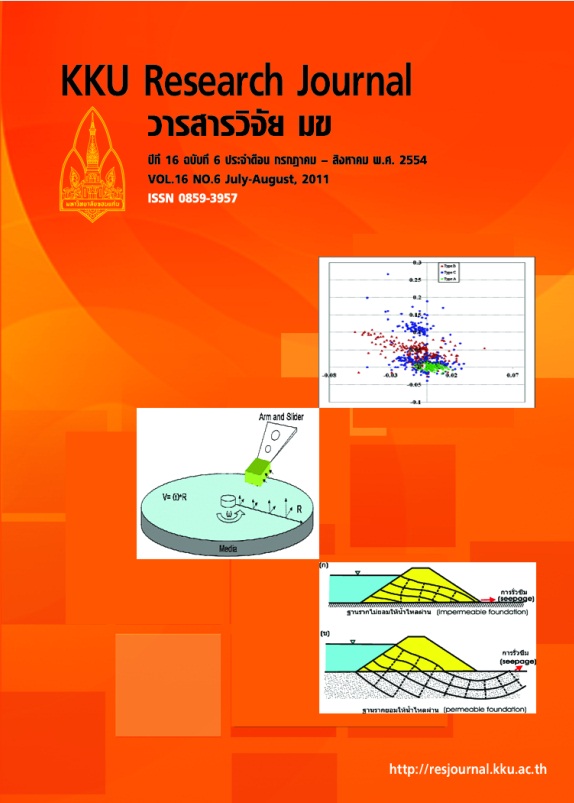The effects of capillary tip geometry on solder jetting accuracy in laser solder ball jetting process
Main Article Content
Abstract
The effects of capillary tip geometry on solder ball jetting accuracy in laser solder ball jetting process were studied in order to review the molten ball behavior. In the experiment, the micro-scale lead free solder ball was melted by laser energy inside three difference types of capillary categorized by tip geometry. A capillary type A was a conventional tip. Type B was manufactured by using micro-fabrication process to form the chamfer tip. And type C was micro-fabricated to have the fillet tip. The molten solder ball was jetted out from the capillary by pressure of inert gas onto substrate. The high-speed camera was used to capture the jetting behavior. The semi-auto visualization method was used to analyze solder droplet deposition on the substrate and compare between these capillary types. Then by using SEM, the quality of solder droplets on the substrate was compared. The results showed that the solder ball, jetted from different capillary types, was not melted completely when it started moving out from capillary tip. Its temperature kept increasing after it was ejected from capillary tube. The ball then reached the melting point, the “glowing” point, when it was totally ejected from capillary tube. The molten solder ball shape still was in spherical shape while dropped onto the target. The conventional capillary tip was given better accuracy than the other two capillaries. And SEM images showed that surface of solder droplet from the conventional capillary was smoother than the surface of the solder droplet that performed by the other two capillary types.
Article Details
How to Cite
Mata, S., & Taechajedcadarungsri, S. (2017). The effects of capillary tip geometry on solder jetting accuracy in laser solder ball jetting process. Asia-Pacific Journal of Science and Technology, 16(6), 596–611. retrieved from https://so01.tci-thaijo.org/index.php/APST/article/view/83417
Section
Research Articles


